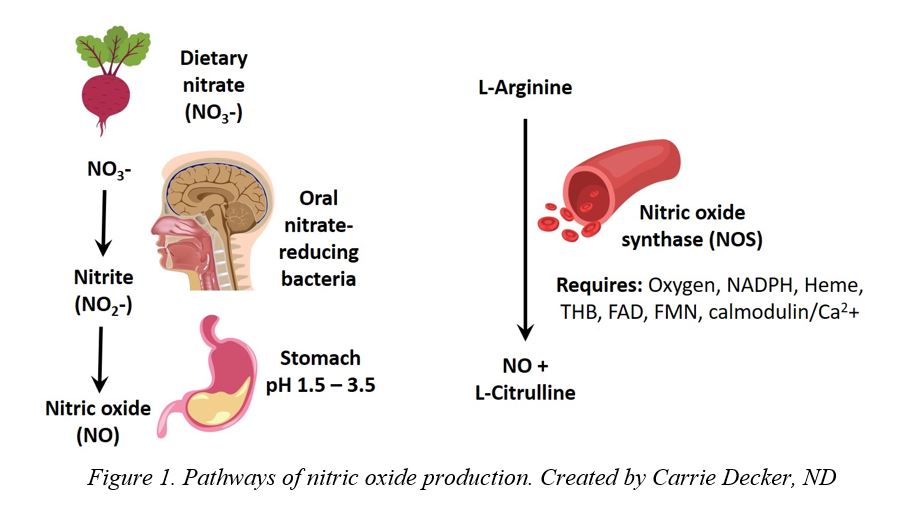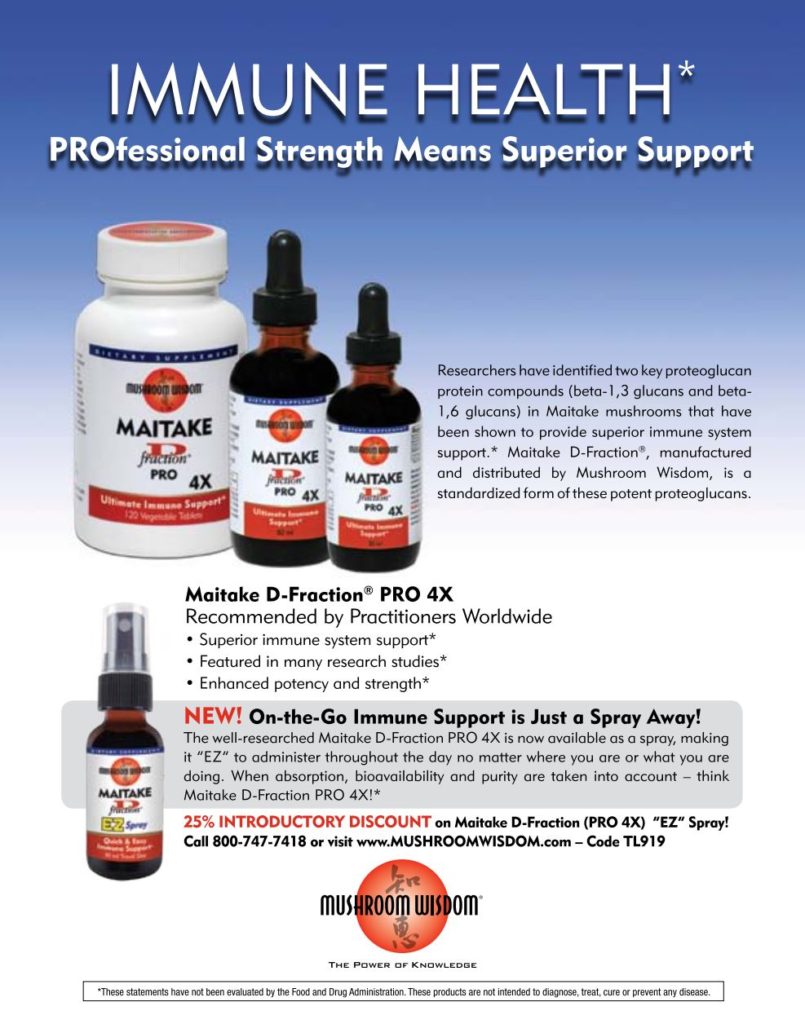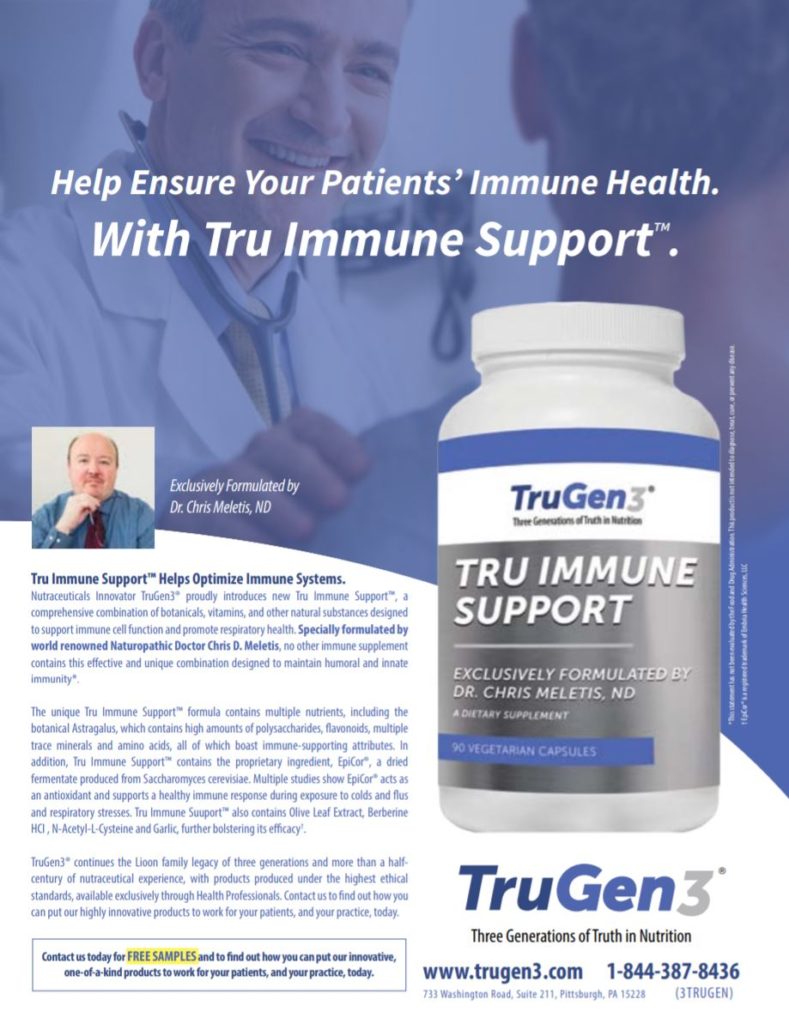…article continued:
Two Pathways of Nitric Oxide Production

There are two pathways by which NO is created in the body (see Figure 1).25 One pathway entails the reduction of dietary nitrates to nitrite and then NO.26 Another pathway depends upon the enzyme nitric oxide synthase (NOS) to convert L-arginine to NO.27
Oral Hygiene
In the NOS independent pathway of NO production, facultative oral microflora reduce dietary nitrates (NO3–) to nitrites (NO2–), which are then converted to NO in the acidic environment of the stomach.26
In this pathway, the presence of particular oral bacteria and the stomach’s low pH are invaluable for NO production. These requisite conditions are undermined, however, by antiseptic mouthwashes, proton-pump inhibitors, and over-the-counter antacid medications—agents commonly used in industrialized societies.28–30 Although restoring a patient’s gastric acidity is a relatively straightforward task for the naturopathic physician, as of this writing there is no nutritional probiotic supplement that contains the oral bacteria essential for nitrate reduction. We may still, however, advise patients to avoid commercial mouthwash products.26
Dark Leafy Greens and Beetroot
Vegetable-rich diets have been shown to support heart health,31,32 in part due to their nitrite and nitrate content. High nitrate diets lower the risks of hypertension, heart attack, and stroke,33–35
Although dietary nitrites such as those naturally found in bacon have been vilified, nitrites and nitrates are actually naturally occurring molecules produced in the body that are important to health.36,37 (The culprit in processed meats is likely not nitrite, but rather the carcinogenic compound nitrosamine.38,39)
In addition to eating plenty of green, leafy vegetables, powdered greens products, beetroot (also known simply as “beets”), and beetroot products may all be used as supplemental sources of nitrates, antioxidants, and phenolic compounds pertinent to cardiovascular health.40 Beetroot is a particularly rich source of nitrates and antioxidant compounds and has been observed to increase NO levels and lower blood pressure readings in both men and women of various ages.41–43
L-Arginine and L-Citrulline
L-Arginine may be acquired from nutritional supplements and/or endogenously derived from the amino acid L-citrulline, and serves as the source raw material from which the body produces NO via NOS (Figure 1).44 Low serum levels of L-arginine have unsurprisingly been correlated with poor NO production.45
A significant percentage of ED patients have low L-arginine or L-citrulline levels, placing them at increased risk of disease.45 Because of this and because the NOS-dependent route of NO production was the first pathway discovered, the nutraceutical product market is now replete with L-arginine-containing formulae.46
Although oral L-arginine supplementation may improve NO-mediated vasodilation and endothelial function, its effects as a monotherapy are transient due to the short duration of its presence in the circulation (on the order of milliseconds).47 This may be why a review of L-arginine’s efficacy in the treatment of ED reports that a minimum dosage of 3 g daily is necessary to achieve outcomes. Some studies have even dosed the amino acid at 5 g and higher.48
The efficacy of L-arginine may be improved by delivering it alongside N-acetylcysteine or glutathione (GSH), both of which contain sulfur residues or thiols. NO binds GSH, forming S-nitrosoglutathione. This molecule then transports and circulates NO, has a half-life of hours, and is just as vasoactive as NO.49 Antioxidants like ascorbate also are able to cleave or release bound NO.50 L-arginine also pairs particularly well with Pycnogenol, as is explored in the section below.
Unlike L-arginine, its precursor L-citrulline (named for the watermelon, or Citrullus vulgaris, from which it is derived51) evades presystemic metabolism, effectively increasing circulating NO levels.45,52,53 This may make L-citrulline a more advantageous nutritional supplement than L-arginine in the treatment of ED, hypertension, and related vascular conditions.54,55
Although L-citrulline supplements are less effective than PDE5i’s (at least in the short term), they are an effective adjuvant to PDE5i treatment.54,56 L-citrulline has also been shown to be safe and psychologically well tolerated.54
What may be even more effective than L-arginine or L-citrulline monotherapy, however, is the administration of the two NOS substrates concurrently: Simultaneous oral supplementation of L-arginine and L-citrulline (1 gram of each) increased plasma L-arginine levels more than 2 g of either alone in a 2017 study.57 (Note that because many viruses, including herpes simplex virus [HSV], are dependent upon the bioavailability of arginine,58 L-arginine and L-citrulline supplements may be poorly tolerated by patients with frequent HSV outbreaks.)
In addition to augmenting the body’s supply of L-arginine, it is also important to support conversion of the amino acid into NO.38 This conversion is enhanced by oxygen, NADPH, heme, tetrahydrobiopterin (THB, also known as BH4), and other coenzymes. Things as simple as checking oxygen saturation and ferritin levels may therefore prove advantageous.
Pycnogenol
A standardized extract from the bark of the French maritime pine, Pinus pinaster—or Pycnogenol, as it’s known in the US by its patent name—can improve erectile function both as a stand-alone treatment and in combination with L-arginine.59,60






